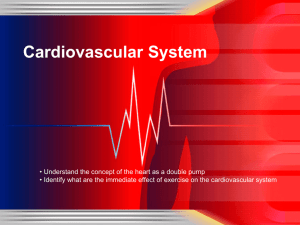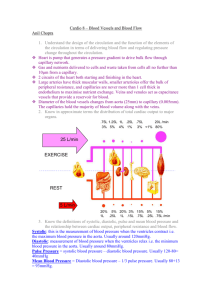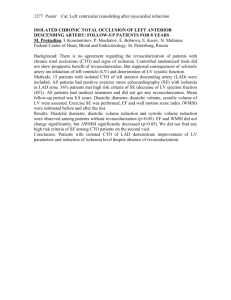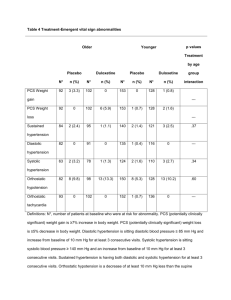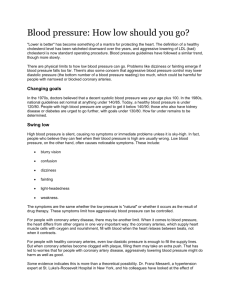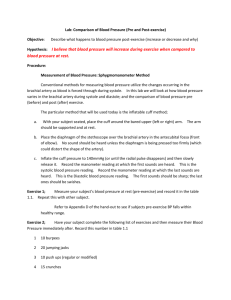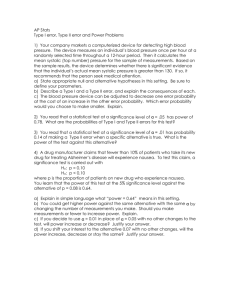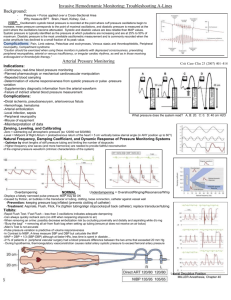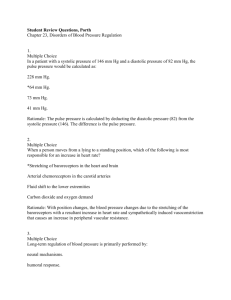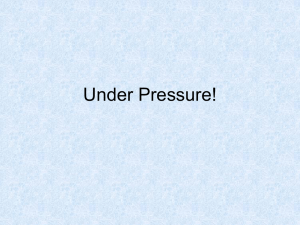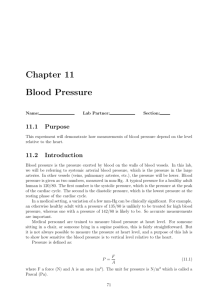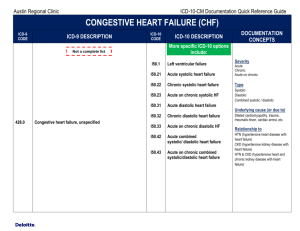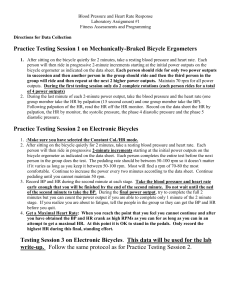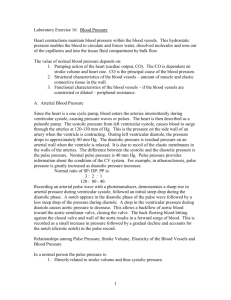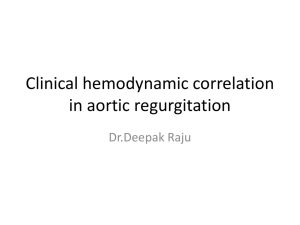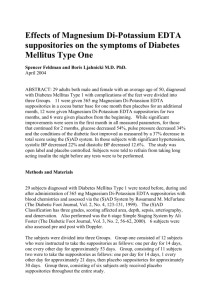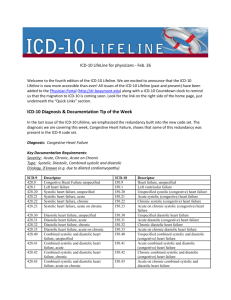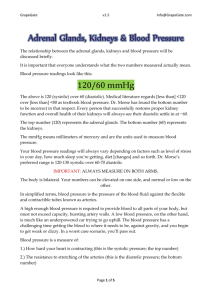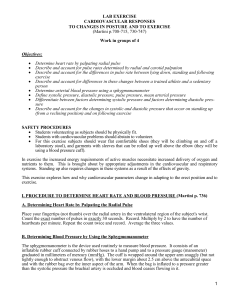MEASURING AND RECORDING BLOOD PRESSURE 1) The basic
advertisement
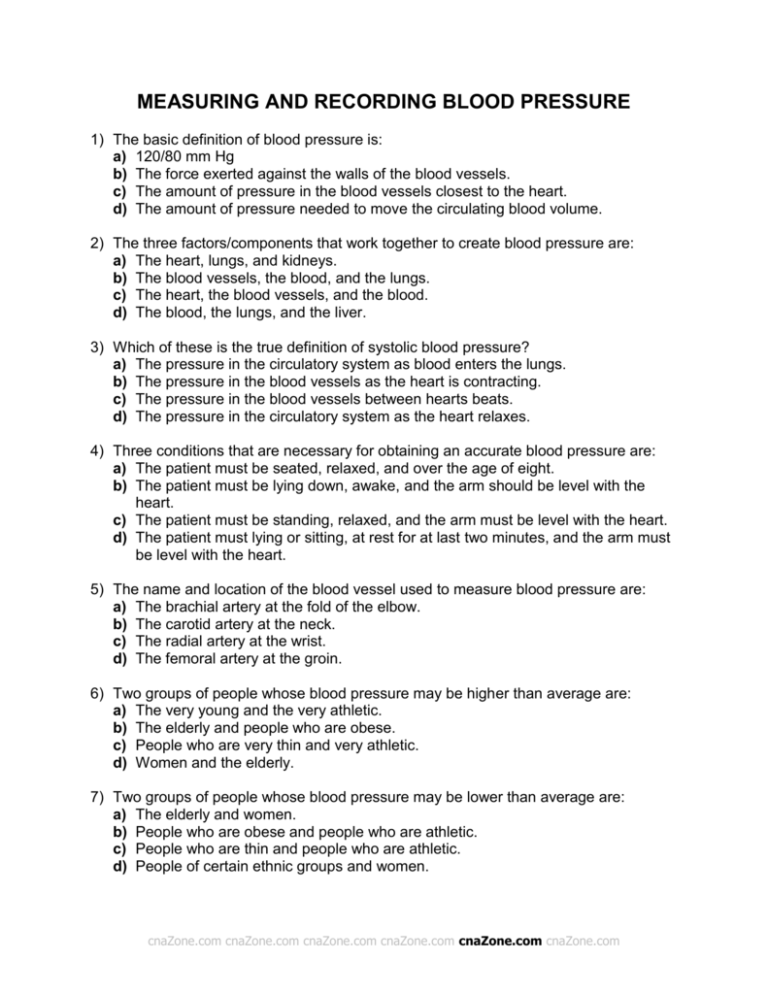
MEASURING AND RECORDING BLOOD PRESSURE 1) The basic definition of blood pressure is: a) 120/80 mm Hg b) The force exerted against the walls of the blood vessels. c) The amount of pressure in the blood vessels closest to the heart. d) The amount of pressure needed to move the circulating blood volume. 2) The three factors/components that work together to create blood pressure are: a) The heart, lungs, and kidneys. b) The blood vessels, the blood, and the lungs. c) The heart, the blood vessels, and the blood. d) The blood, the lungs, and the liver. 3) Which of these is the true definition of systolic blood pressure? a) The pressure in the circulatory system as blood enters the lungs. b) The pressure in the blood vessels as the heart is contracting. c) The pressure in the blood vessels between hearts beats. d) The pressure in the circulatory system as the heart relaxes. 4) Three conditions that are necessary for obtaining an accurate blood pressure are: a) The patient must be seated, relaxed, and over the age of eight. b) The patient must be lying down, awake, and the arm should be level with the heart. c) The patient must be standing, relaxed, and the arm must be level with the heart. d) The patient must lying or sitting, at rest for at last two minutes, and the arm must be level with the heart. 5) The name and location of the blood vessel used to measure blood pressure are: a) The brachial artery at the fold of the elbow. b) The carotid artery at the neck. c) The radial artery at the wrist. d) The femoral artery at the groin. 6) Two groups of people whose blood pressure may be higher than average are: a) The very young and the very athletic. b) The elderly and people who are obese. c) People who are very thin and very athletic. d) Women and the elderly. 7) Two groups of people whose blood pressure may be lower than average are: a) The elderly and women. b) People who are obese and people who are athletic. c) People who are thin and people who are athletic. d) People of certain ethnic groups and women. cnaZone.com cnaZone.com cnaZone.com cnaZone.com cnaZone.com cnaZone.com 8) Normal blood pressure is: a) Systolic pressure below 120 mm Hg and diastolic pressure below 80 mm Hg. b) Systolic pressure greater than 140 mm Hg and diastolic pressure greater than 90 mm Hg. c) Systolic pressure lower than 90 mm Hg and diastolic pressure lower than 60 mm Hg. d) Systolic pressure below 120 mm Hg and diastolic pressure greater than 90 mm Hg. 9) Hypertension is defined as: a) Systolic pressure below 120 mm Hg and diastolic pressure below 80 mm Hg. b) Systolic pressure greater than 140 mm Hg and diastolic pressure greater than 90 mm Hg. c) Systolic pressure lower than 90 mm Hg and diastolic pressure lower than 60 mm Hg. d) Systolic pressure below 120 mm Hg and diastolic pressure greater than 90 mm Hg. 10) Two signs/symptoms, respectively, of hypertension and two for hypotension would be: a) Insomnia/headache, blurred vision/weakness. b) Blurred vision/headache, blood in the urine/fainting. c) Blurred vision/dizziness, fainting/difficulty breathing. d) Chest pain/difficulty breathing, weakness/confusion. cnaZone.com cnaZone.com cnaZone.com cnaZone.com cnaZone.com cnaZone.com


